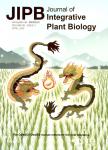Distribution and Fate of Anthropogenic Nitrogen in the Calamagrostis angustifolia Wetland Ecosystem of Sanjiang Plain, Northeast China
Distribution and Fate of Anthropogenic Nitrogen in the Calamagrostis angustifolia Wetland Ecosystem of Sanjiang Plain, Northeast China作者机构:Northeast Institute of Geography and Agricultural Ecology the Chinese Academy of Sciences Changchun 130012 China Graduate School of the Chinese Academy of Sciences Beijing 100039 China
出 版 物:《Journal of Integrative Plant Biology》 (植物学报(英文版))
年 卷 期:2008年第50卷第4期
页 面:402-414页
核心收录:
学科分类:09[农学]
基 金:the Knowledge Innovation Program of the Chinese Academyof Science (KZCX2-YW-309 and KZCX3-SW-332) the National ScienceFoundation of China (90211003)
主 题:^15N Tracer technique agricultural runoff Calamagrostis angustifolia wetland distribution and fate Sanjiang Plain.
摘 要:Wetlands are important for the protection of water quality of rivers and lakes, especially those adjacent to agricultural landscapes, by intercepting and removing nutrients in runoff. In this study, the ^15N tracer technique was applied to study the distribution and fate of anthropogenic nitrogen (^15N-fertilizer) in Calamagrostis angustifolia Kom wetland plant-soil microcosms to identify the main ecological effects of it. ^15NH4^15NO3 solution (14.93 mg N/L, 20.28 at.% ^15N) was added to each microcosm of the first group, which was approximate to the current nitrogen concentration (CNC) of farm drainage, and 29.86 mg NIL ^15NH4^15NO3 solution was added to another group, which was approximate to the double nitrogen concentration (DNC) of farm drainage, while no nitrogen (NN) was added to the third group. The results suggest that the input of anthropogenic nitrogen has positive effects on the biomass and total nitrogen content of plant, and the positive effects will be elevated as the increase of its input amount. The increase of ^15N-fertilizer can also elevate its amounts and proportions in plant nitrogen. Soil nitrogen is still the main source of plant nitrogen, but its proportion will be reduced as the increase of ^15 N-fertilizer. The study of the fate of ^15N-fertilizer indicates that, in CNC treatment, only a small proportion is water-dissolved (0,13 ± 0.20%), a considerable proportion is soil-immobilized (17.02 ± 8.62%), or plant-assimilated (23.70 ± 0.92%), and most is lost by gaseous forms (59.15 ± 8.35%). While in DNC treatment, about 0.09 ± 0.15% is water-dissolved, 15.33 ± 7.46% is soil-immobilized, 23.55±2.86% is plant-assimilated, and 61.01±5.59% is lost by gaseous forms. The double input of anthropogenic nitrogen can not elevate the proportions of plant-assimilation, soil-immobilization and water-dissolution, but it can enhance the gaseous losses.



